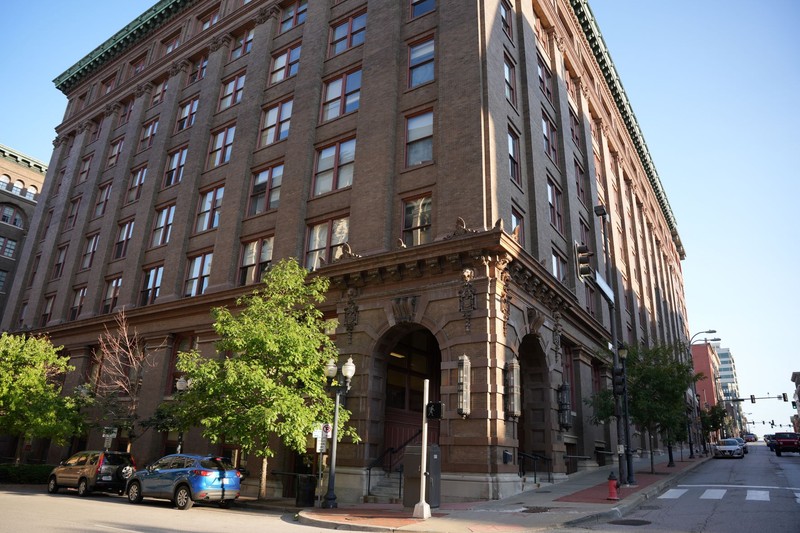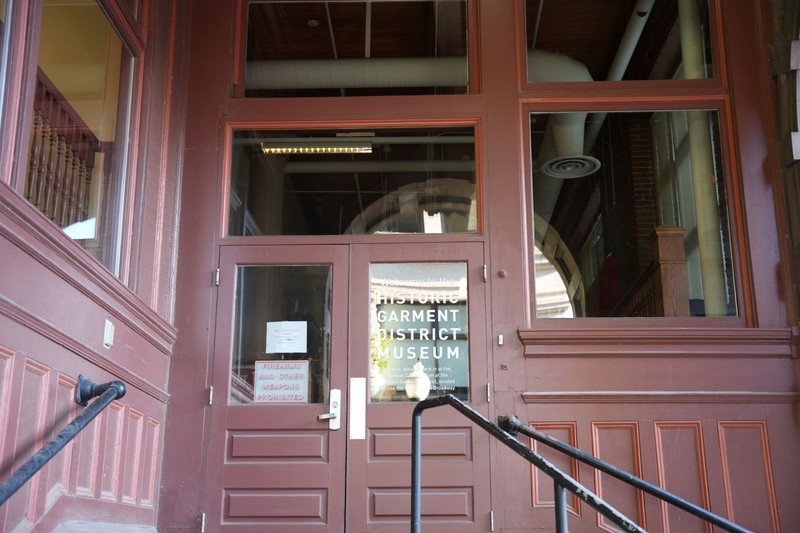Kansas City Historic Garment District Museum
Introduction
Author-Uploaded Audio
Introduction to the museum by Denise Morrison of the Kansas City Museum
Text-to-speech Audio
The Kansas City Garment District Museum is housed in the former office space for Poindexter Dry Goods, built in 1901. It was founded by Ann Brownfield and Harvey Fried in 2002. As former employees in the Garment District, the museum heavily relied upon their firsthand reflections and knowledge of the district. Ownership and management of the collection was transferred to the Kansas City Museum in 2015. Beginning in 2022, the museum is co-owned by the Kansas City Museum Foundation and Union Station.
Images


Backstory and Context
Text-to-speech Audio
Kansas City’s Garment District was one of the nation’s largest garment districts, second only to New York City’s, which earned it the moniker “Paris of the Plains.” In the 1930’s, one in seven women in the U.S. owned a garment made in Kansas City. Located in buildings dating back to the 1870’s, the Garment District grew immensely in the early - to - mid twentieth century.
The Garment District allowed women to take on work as seamstresses, which was considered a respectable job during a time when women were expected to work within the home. One of the largest labor unions of the 1930’s in the United States came out of the Garment District: the Ladies’ Garments Workers’ Union. Nelly Don, Kansas City’s pioneer in fashion, even offered its employees benefits and childcare.
Nelly Don was founded by Nell Donnelly and became the largest dress manufacturer of the 20th century with 75 million dresses made between 1916 and 1978.
The Garment District became one of the largest employers of women, immigrants, and Jewish refugees. It allowed even those with little knowledge on making an entire garment to find employment in the industry. A streamline process known as the “section system” was created and functioned much like an assembly line. Each person would sew just one part of the garment and could focus on just learning how to sew that section - such as sewing on buttons for example.
The Garment District was heavily influential over Kansas City’s economy for decades. It experienced its prime in the 1950’s and 1960’s, but its decline began during the 1960’s and became worse during the 1970’s. This was caused by the decline in farming since many of the garments were sold to the agricultural market. Because of this, rural markets began closing their department stores and the district lost its market. The decline was also caused by the increase in overseas manufacturing.
Sources
Verkamp, Valerie. The Historic Garment District, The Landmark. July 17th, 2022. Accessed September 7th, 2022. https://plattecountylandmark.com/2022/06/17/the-historic-garment-district/.
Light, Kristina. Historic Garment District, KC Parent. August 2nd, 2012. Accessed September 7th, 2022. https://kcparent.com/things-to-do-in-kc/historic-garment-district/.
Historic Garment District Museum of Kansas City, Kansas City Parks & Recreation. Accessed September 7th, 2022. https://kcparks.org/places/historic-garment-district-museum-of-kansas-city/.
Historic Garment District Museum, Kansas City Museum. Accessed September 7th, 2022. http://kansascitymuseum.org/historic-garment-district-museum/.
Hoover, Abby. City transfers ownership of collection to Kansas City Museum Foundation, Northeast News. June 15th, 2022. Accessed September 7th, 2022. http://northeastnews.net/pages/city-transfers-ownership-of-collection-to-kansas-city-museum-foundation/.
Pivovar, Christine. Historic Garment District Museum, Squeezebox. September 28th, 2016. Accessed September 7th, 2022. http://www.squeezeboxcity.com/garment-district-museum/.
Photo by David Trowbridge
Photo by David Trowbridge
